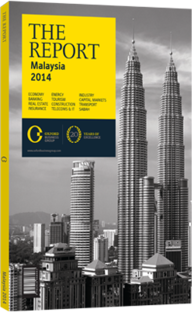Making the grade: While still low in the ranks, tertiary institutions are faring better in subjects key to economic development
Universities in Malaysia have been given a key role in government plans to raise the country to developed-nation status by 2020. However, much more investment will be necessary if higher education institutions are to meet the targets the state has set.
According to government figures, one-quarter of all Malaysians aged 18-24 are taking part in some form of higher education, a level of participation that Prime Minister Najib Razak says will help the country reduce income inequality and reach its goal of becoming a high-income nation by the end of the decade. “The odds of people succeeding in their socioeconomic upward mobility are significantly improved by raising access to education,” he said at a ceremony at Unitar International University in Kelana Jaya on February 27, 2014. “Only with equity can we narrow the gap of income inequality and achieve a resilient national unity.”
Progress Report
Not only is greater access to higher education in the government’s sights, Malaysia is aiming to boost the quality of academics as well. The two-pronged goal is to have at least one domestic institution ranked among the world’s top 50 universities by 2020, and at least three in the top 100.
Hitting this target may prove difficult. In the QS World University Rankings 2013/14, the preferred benchmark according to the Ministry of Education, the highest-placing institution was Universiti Malaya, which came in at 167, followed by Universiti Kebangsaan Malaysia (269), Universiti Sains Malaysia (355) and Universiti Teknologi Malaysia (355).
By subject Malaysia fared a little better. In a separate QS ranking published in February 2014, eight of its institutions made the top 200 in at least one of 30 disciplines reviewed – two more than in its 2013 grade. The best performer was Universiti Sains Malaysia, ranked 28th for environmental sciences, and in the top 100 for computer science and information systems, chemical engineering, civil engineering and mechanical engineering. Second best was Universiti Malaya, which made the top 100 in six categories, including computer science and information systems, chemical engineering, electrical engineering and mechanical engineering. The 2013/14 results show that Malaysian universities are operating at an increasingly higher level in certain academic disciplines, QS Intelligence Unit head of research, Ben Sowter, told media. “Overall, the performance of Malaysian institutions has improved compared to [2013],” he said. “Through taking a more targeted approach to ranking universities, we have been able to pick up on the particular strengths of Malaysian institutions much more effectively than is possible in overall institutional rankings.”
Academics & Economics
Success in international ratings surveys are not only important to individual universities, they also bring clear financial benefits to the country. Better rankings help universities attract more international students, staff, business investment and research partners.
Another positive effect of a stronger higher education system would be a reduction in the flow of Malaysian students overseas. As many as 80,000 study abroad annually, of whom roughly a third receive some form of sponsorship. Although a similar number of international students flow into Malaysia, the balance of revenue from higher education could be swung more firmly in the country’s favour if it were able to keep more of its students at home, all while attracting additional fee-paying foreigners from other markets.
One encouraging fact is that many of the disciplines where Malaysian universities scored well in the QS rankings were in the technical and scientific fields. This indicates strength in areas with practical applications that tend to aid economic development. Although Malaysia may find it a challenge to reach the upper tiers of global university rankings, in terms of moving closer to its national economic targets the country appears to be making the grade.
You have reached the limit of premium articles you can view for free.
Choose from the options below to purchase print or digital editions of our Reports. You can also purchase a website subscription giving you unlimited access to all of our Reports online for 12 months.
If you have already purchased this Report or have a website subscription, please login to continue.

